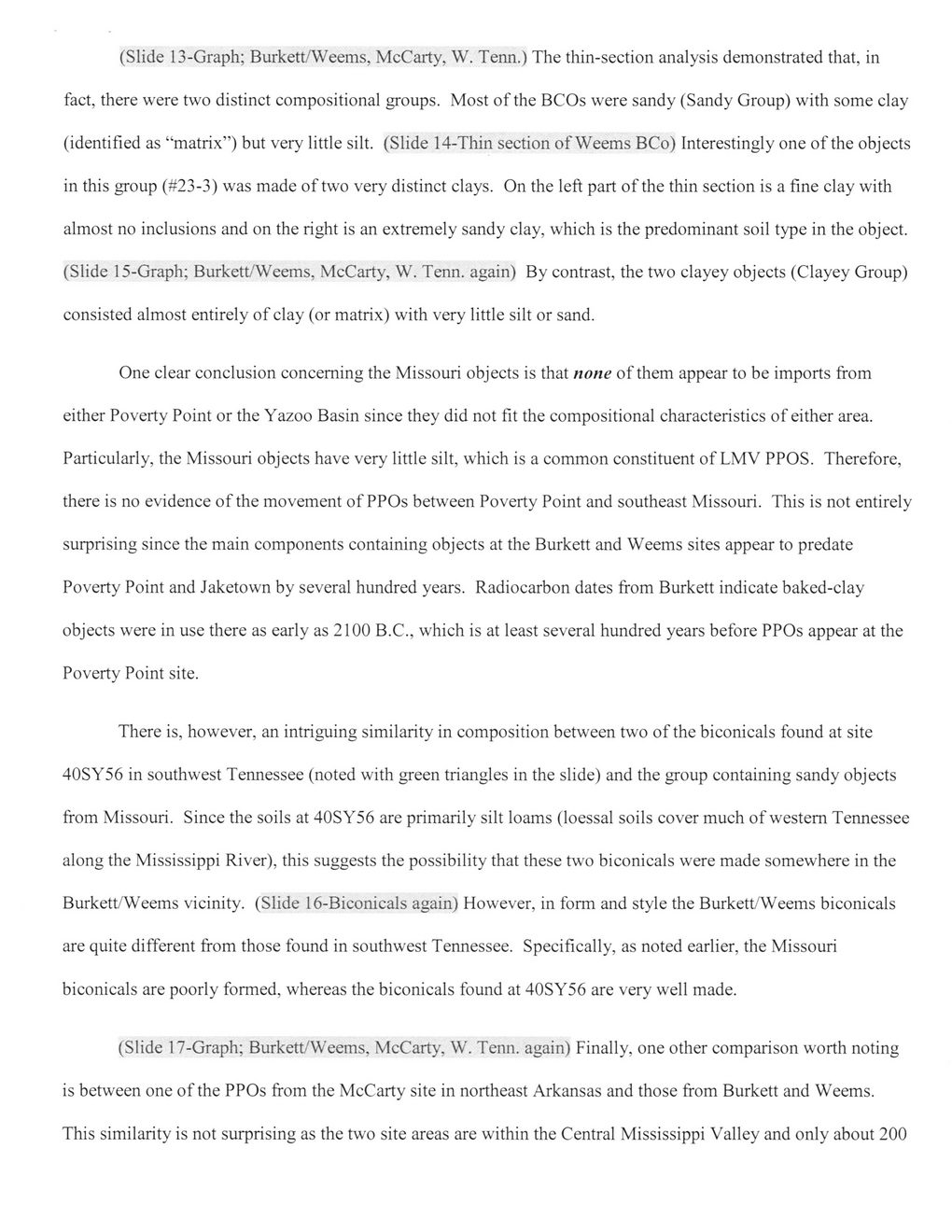This text was obtained via automated optical character recognition.
It has not been edited and may therefore contain several errors.
(Slide 13-Graph; Burkett/Weems, McCarty, W. Tenn.) The thin-section analysis demonstrated that, in fact, there were two distinct compositional groups. Most of the BCOs were sandy (Sandy Group) with some clay (identified as “matrix”) but very little silt. (Slide 14-Thin section of Weems BCo) Interestingly one of the objects in this group (#23-3) was made of two very distinct clays. On the left part of the thin section is a fine clay with almost no inclusions and on the right is an extremely sandy clay, which is the predominant soil type in the object. (Slide 15-Graph; Burkett/Weems, McCarty, W. Tenn. again) By contrast, the two clayey objects (Clayey Group) consisted almost entirely of clay (or matrix) with very little silt or sand. One clear conclusion concerning the Missouri objects is that none of them appear to be imports from either Poverty Point or the Yazoo Basin since they did not fit the compositional characteristics of either area. Particularly, the Missouri objects have very little silt, which is a common constituent of LMV PPOS. Therefore, there is no evidence of the movement of PPOs between Poverty Point and southeast Missouri. This is not entirely surprising since the main components containing objects at the Burkett and Weems sites appear to predate Poverty Point and Jaketown by several hundred years. Radiocarbon dates from Burkett indicate baked-clay objects were in use there as early as 2100 B.C., which is at least several hundred years before PPOs appear at the Poverty Point site. There is, however, an intriguing similarity in composition between two of the biconicals found at site 40SY56 in southwest Tennessee (noted with green triangles in the slide) and the group containing sandy objects from Missouri. Since the soils at 40SY56 are primarily silt loams (loessal soils cover much of western Tennessee along the Mississippi River), this suggests the possibility that these two biconicals were made somewhere in the Burkett/Weems vicinity. (Slide 16-Biconicals again) However, in form and style the Burkett/Weems biconicals are quite different from those found in southwest Tennessee. Specifically, as noted earlier, the Missouri biconicals are poorly formed, whereas the biconicals found at 40SY56 are very well made. (Slide 17-Graph; Burkett/Weems, McCarty, W. Tenn. again) Finally, one other comparison worth noting is between one of the PPOs from the McCarty site in northeast Arkansas and those from Burkett and Weems. This similarity is not surprising as the two site areas are within the Central Mississippi Valley and only about 200

Claiborne Historical Site Guerin-Giardino-(039)